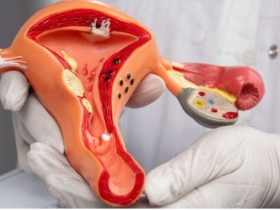When you have ptosis, or droopy eyelids, your eyelids hang over your eye. This may cause visual impairments as well as other issues. There are therapeutic options for the illness, which can be acquired later in life or present from birth (congenital). If you are affected by ptosis, consult with your eye care professional to learn about your alternatives.
Ptosis Types
- Congenital ptosis: This refers to ptosis (ptosis คือ, which is the term in Thai) that is present from birth in your child. Congenital ptosis is brought on by issues with the levator muscle’s development.
- Acquired ptosis: Adults get this kind of ptosis later in life. It happens when the muscle that lifts your eyelid weakens or separates from it.
What Are The Symptoms Of Ptosis?
Your eyelid’s look is usually the best indicator of ptosis in either you or your child. It can completely enclose your pupil, or it might just cover your upper eye. Other signs of ptosis could be: • Prolonged eye rubbing.
• A rise in tearing.
• Diminished or troubled vision.
• Ache and fatigue in the area around your eyes.
• Kids might tilt their heads back to look.

Why Does Ptosis Occur?
The causes of ptosis vary by type. Congenital ptosis refers to ptosis in one or both eyelids that occurs in newborns.
Ptosis can develop later in life (acquired ptosis) if an illness or injury weakens the muscles or ligaments that elevate your eyelid naturally. There are situations when injury to the nerves that regulate your eyelid muscles causes drooping.
Ptosis usually only occurs with aging. Your eyelids’ muscles and skin sag and weaken with age. Because the tools used to maintain your eye open during surgery have the potential to stretch your eyelid, past eye surgery may hasten this transformation.
What Happens If Ptosis Is Left Untreated?
It is best to address your child’s congenital ptosis as soon as possible. If addressed, it may affect how their vision develops and cause other problems. You might not need therapy if you have mild acquired ptosis because it is unlikely to cause vision issues.
However, if you don’t address severe ptosis, it can lead to major issues. Possible ptosis complications include:
- Astigmatism: This condition affects how your eye looks by pressing on the front of the eye. This may distort your vision, making it appear stretched or wavy.
- Amblyopia, or lazy eye, is a condition that can be brought on by astigmatism and other refractive defects, which are problems focusing that necessitate the use of spectacles.
- Chin-up position: Your child may experience neck issues, tense forehead muscles, and developmental delays if they must tilt their chin up to look past drooping eyes.
Conclusion
Your surgeon will give you instructions on how to take care of your eye after surgery. After surgery, it’s crucial to follow up with your provider so they can review your outcomes. Typically, appointments are set up for a few days to a week following surgery.












